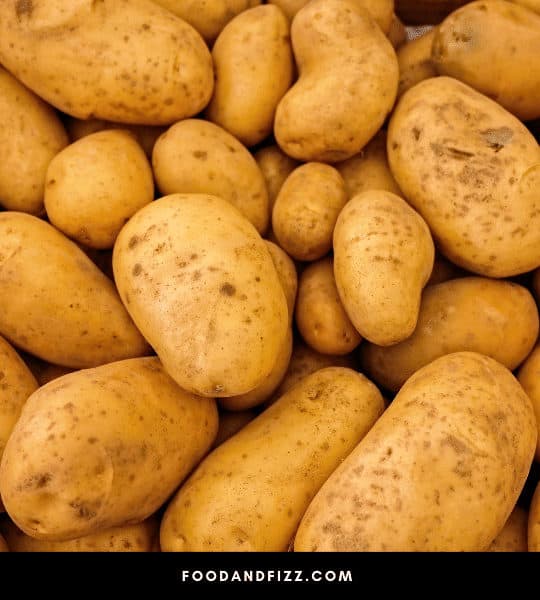Potatoes can look perfectly good on the outside but sometimes when you peel them or cut them, you’ll notice brown spots or brown holes on the surface that can be a little alarming. If you’re the extra careful kind, it can be easy to conclude that you got a batch of bad potatoes, and even more tempting to toss them in the bin.
But what exactly are these brown spots on potatoes? Are they safe to eat?
Brown Spots on Potatoes
Brown Spots on potatoes are called internal rust spots or internal brown spots and can be caused by a variety of things. Stress on the potato while it was growing due to environmental or soil conditions, certain pests, viruses or fungi, insufficient calcium, and potato varietal susceptibility are among the reasons why potatoes may develop this condition.
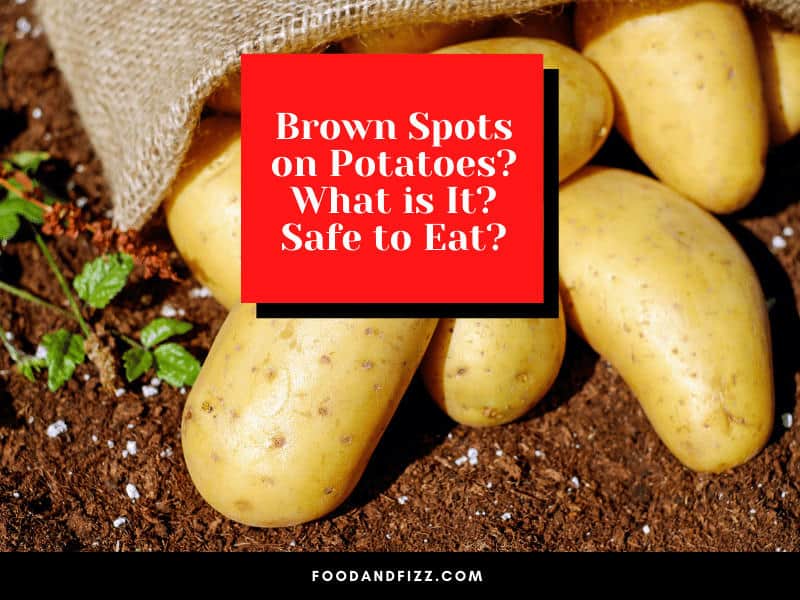
How Are Potatoes Grown
Potatoes originated in the Andean region in South America and were brought to the US in 1719 by Irish immigrants. Since then, it has become a staple food for many and is actually the top non-grain food crop in the world.
With many varieties all over the world
Seed Potatoes
Unlike other plants that are grown from seeds, most potatoes are actually grown from other potatoes.
“Seed potatoes” are cut-up pieces of potatoes that are planted underground, and from there, new potatoes or tubers sprout from the seed potato (or mother tuber) through the sprouting of underground stems called “stolons”.
Potatoes have visible leaves and flowers above ground, but these are not edible. The potato we know and love, which is a staple food around the world, is found underground.
It is possible to grow potatoes from actual seeds, but it is important to source them from reputable sources to ensure that your potato will be disease-free and be of good quality.
Supermarket potatoes are not normally suitable to be used as seed potatoes, as most of these have been chemically treated to prevent sprouting.
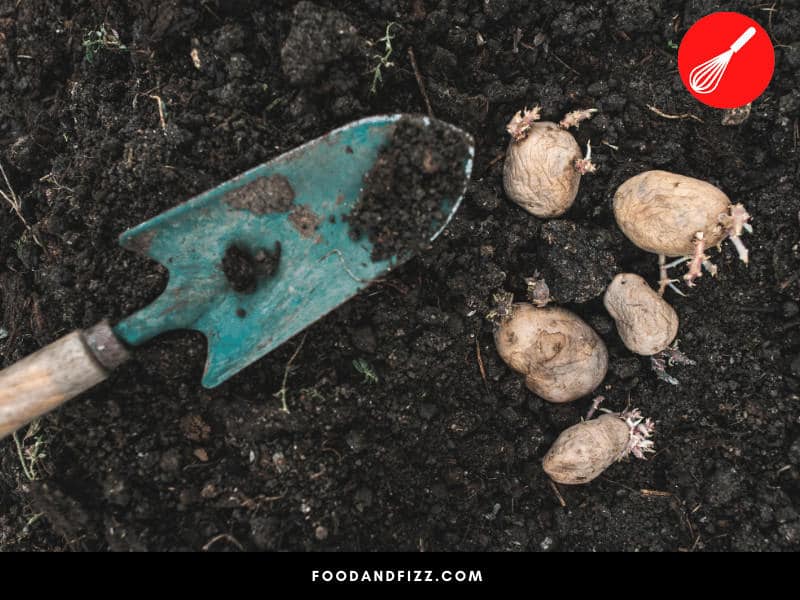
Growing Conditions
Potato plants need sunlight to grow so it is important that they get this, as well as adequate watering. However, they are also a cool-weather crop, which means that they thrive in temperatures between 60-70°F.
Depending on the variety, potatoes are usually ready for harvesting between 3-4 months from planting.
Potatoes are well-loved around the world because of their versatility in dishes, widespread availability, and their nutritional benefits.
Potatoes are naturally fat-free, cholesterol-free, and sodium-free, and when prepared properly, can be added to a health-promoting diet. Simple boiled potatoes can be an absolute treat. Read “How To Tell If Potatoes Are Done Boiling?” to know how to do it right.
Brown Spots on Potatoes? What is it? Safe to Eat?
As with any other crop, there are challenges to growing potatoes that may result in sprouts that are less than perfect. Often, these are harmless to us and are just a result of the potato’s specific growing conditions and handling.
Below are some examples of these conditions we might occasionally notice.
Brown Spots
Brown spots in potatoes, also called internal potato rust or internal brown spots, may be attributed to several different factors.
Stress
When the potatoes are stressed during their growth due to soil, temperature, light, humidity, and other environmental factors, they may start to develop these brown spots on their skin or flesh due to stress.
Potatoes love cool weather and need moist soil, and are particularly sensitive to any of these changes, so if these conditions are unmet during the growing season, they may exhibit brown spots. I think of it as similar to maybe a skin breakout in humans when we experience periods of stress.
Insufficient Calcium
Brown spots may also be due to insufficient calcium supply during the initial stages when the tubers are being formed.
Newly formed cells need calcium to survive and if the plant doesn’t have enough of them to distribute to other cells in young potatoes, they can start to form visible brown spots resulting from cell death. That’s why it is important to supply them with the proper nutrients as they are growing.
Pests, viruses or fungi
Certain pests, viruses, or fungi can also infect potatoes both at the time of growing and during storage, and can often cause unsightly marks on both the skins and the flesh of the potatoes, ranging from tiny light brown specks to full-blown internal and external rotting and decay.
Some of them only affect the potato aesthetically and do not reduce crop yield or growth, but some of them do affect subsequent crop yield that’s why it is important to always regularly check plants to be able to address the infestation as early as possible.
Most of what affects potatoes are not harmful to humans or other vegetables for that matter, but it is still important to get them under control.
Potato Varietal Susceptibility
Certain varieties are more susceptible to developing unwanted growth conditions more than others. That’s why through the process of genetic modification, these characteristics are changed to improve the resiliency of new potato breeds.
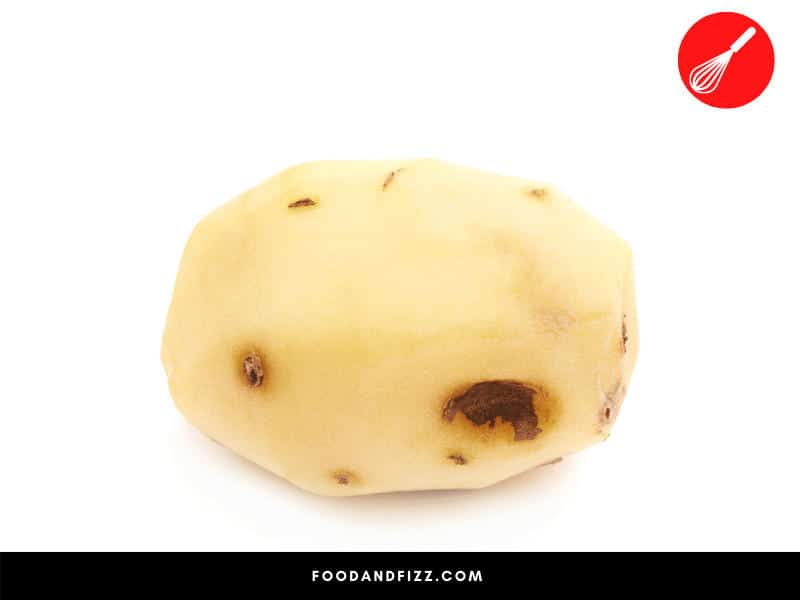
Black or Dark Spots
Sometimes, black or dark spots are caused by handling and storage. The spots are actually bruises that the potatoes develop in response to the impact of harvesting, transporting, and from being stored together with other potatoes.
These spots are difficult to detect because the potatoes don’t immediately develop them, and can only be seen once they are peeled and cut. This is why it is important to ensure that they are properly handled in all steps of the process.
Green Spots
Green spots on potatoes are caused by the production of chlorophyll when the potato is exposed to light. While the chlorophyll itself is harmless, a potato in this green state is also producing an alkaloid called solanine, which can be dangerous when consumed in large amounts.
Solanine poisoning presents both physiological and neurological symptoms which include gastrointestinal upsets, vomiting, dizziness, muscle cramps, inflammation, and others. It can potentially be serious and lead to hospitalization, and in rare cases, death.
A potato with high amounts of solanine can also be very bitter, so it is doubtful it will be very pleasant to eat.
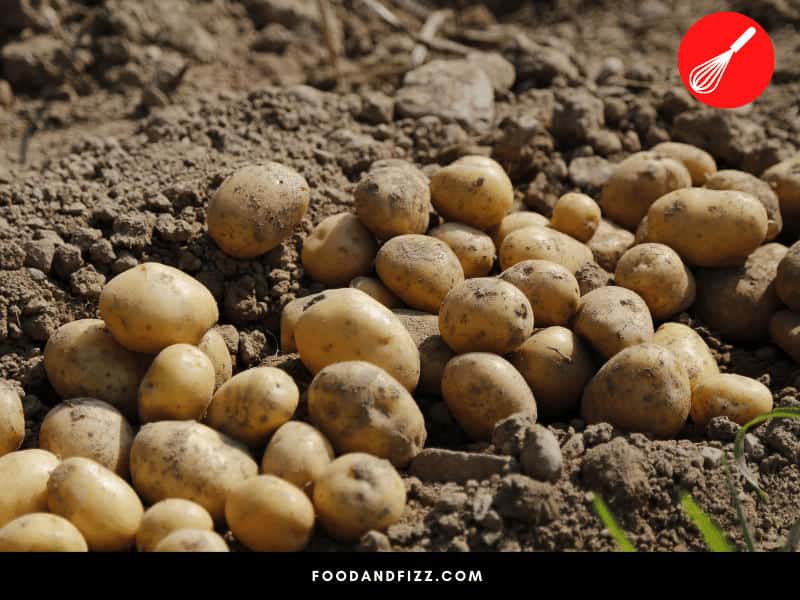
Are Potatoes with Blemishes Safe to Eat?
Potatoes with blemishes are usually safe to eat, as long as you cut away and discard the affected parts. However, it is important to be careful when deciding whether or not to consume an affected potato.
If the spots are small and only affect a small part of the potato, you would probably be okay with cutting those parts away and proceeding with using them in your recipe.
However, if the infestation is severe or if there is evidence of spoilage or other signs of decay, it is best to throw them out. I am a firm believer in the saying, “when in doubt, throw it out”.
Potatoes are not terribly expensive and are easily available anywhere. Besides the fact that fresh potatoes will probably taste better, it is not worth risking consuming a potentially sickness-harboring potato.
In the case of green potatoes though, I would advise against consuming them even if you cut away the green parts. The presence of solanine could potentially lead to digestive and neurological issues, and I do not think it is worth the risk.
As we already said, it is better to be prudent and to exercise caution. Better to be safe than sorry! Besides, the potato in this case will probably even be bitter, and will not be as enjoyable to eat as a properly handled and stored potato.
How to Know if Potatoes Are Bad
A fresh, still-good potato should be firm, have an earthy smell, and should not have wrinkly skin or have any other odd things growing on them.
If your potato shows any of the following traits, it is usually a sign that it has gone bad and should be thrown out:
- Wrinkly skin
- Has started to sprout
- Has visible mold or obvious signs of rotting
- Strong, rotten smell (this is hard to miss!)
- Mushy and soft in texture
- Discoloration both in the skin and the flesh
- Green spots or areas
While with black spots and brown spots in potatoes, you will generally be safe with cutting them away and just using the unaffected parts, it is still important to practice caution and common sense.
If it has affected a big part of the potato, it would probably be best to just toss them and get new ones.
Risks of Eating Bad Potatoes
Eating potatoes that are past their prime or are improperly handled and stored may cause food-borne illnesses that may lead to gastrointestinal issues and in the case of solanine poisoning, neurological symptoms that can potentially be serious and may lead to hospitalization and death.
Potatoes are not expensive and are available pretty much anywhere. It is probably not worth the health risk of trying to salvage a severely infected potato.
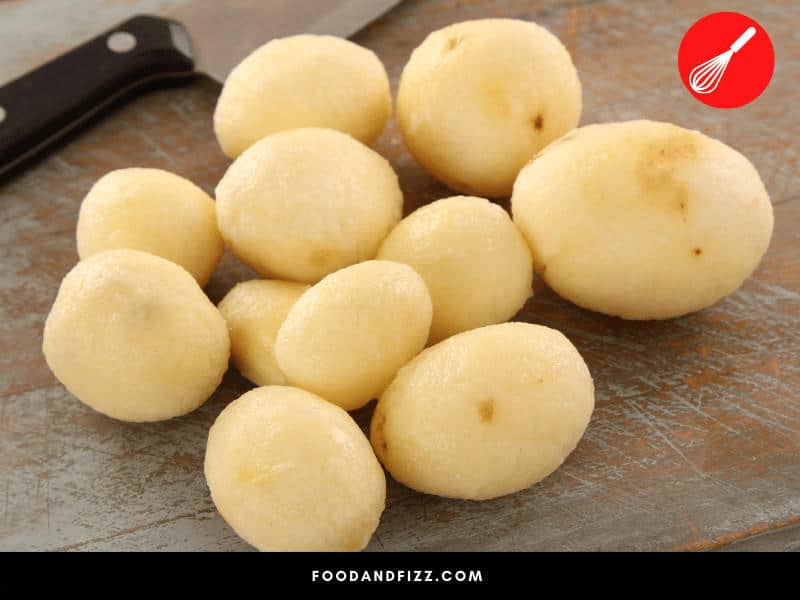
Conclusion to Brown Spots on Potatoes
Brown spots in potatoes are generally caused by growing conditions and circumstances that have not allowed the potato to develop properly.
If the brown spots occur in just a small part of the potato, you will generally be safe if you just cut them out and use the good parts, however, if it has infected the whole potato, it would be best to just discard and get a new batch.
The experience of eating starts with the eyes, and if what we see is not appetizing, we probably wouldn’t enjoy it anyway. We’d be better off just getting a fresh new batch of potatoes.
Frequently Asked Questions About Brown Spots on Potatoes
Are Green Potatoes Safe to Eat?
Potatoes turn green because of the chlorophyll that is produced when they are exposed to light. While chlorophyll is not harmful in itself, this also means that the potato is producing a higher amount of solanine, an alkaloid that can potentially be toxic when consumed in large amounts. Solanine poisoning causes gastrointestinal and neurological issues, which may sometimes lead to hospitalization and death.
What are the White Spots on Potatoes?
White spots on potatoes are essentially the swollen pores of the potato caused by too much water. These are called lenticels, and it is what the potatoes use to breathe. In certain soil conditions, these lenticels get blocked up and swell, hence the white spots. While it can be a bit concerning to see, the potatoes are still perfectly safe to eat.

